Cardiology After COVID-19: Physicians Predict Lasting Change
A new era for telemedicine, rebuilding patient trust, and an increase in efficiency of care were common themes.
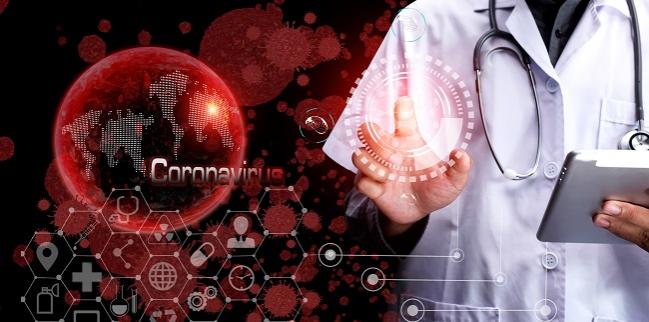
COVID-19 put an abrupt stop to face-to-face clinical consults, structural interventions, elective procedures, cardiac rehab, and clinical trials. But as regions around the world take tentative steps to return to a new normal, many cardiologists are contemplating the short- and long-term impact of the pandemic.
Many spoke of the rapid integration of telemedicine and the futility of going back to the way things were done before. Others mentioned the need for consistent and ongoing use of personal protective equipment (PPE) in cath labs and ORs that did not previously require it, as well as the physical reconfiguration of care spaces to reduce the risk of exposure for both patients and practitioners. Given mounting evidence of how the virus interacts with the cardiovascular system, several of the people who spoke with TCTMD stressed the need for rigorous investigation and multidisciplinary collaboration over the long term. Many also highlighted the importance of rebuilding patient trust and reminding the wary public that hospitals are safe places that should not be avoided for non-COVID-19-related care.
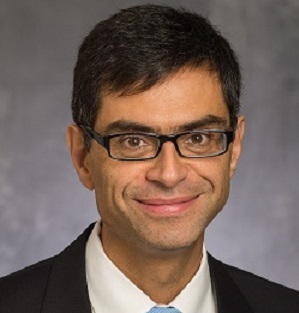 Emmanouil Brilakis, MD, PhD, director of the Center for Complex Coronary Interventions, Minneapolis Heart Institute, MN
Emmanouil Brilakis, MD, PhD, director of the Center for Complex Coronary Interventions, Minneapolis Heart Institute, MN
What’s interesting is that COVID-19 will eventually go away, but coronary disease will stay. With everyone now occupied with the virus, we have the adverse impact of people not seeking other medical care and getting delayed treatment. In the next year or two, until things calm down and people remain afraid to come to the hospital, we will have to find ways to provide good care. Until there is a vaccine or medication, cardiology care will be very slow. Many places are starting to function at half capacity. We have a huge backlog right now and are trying to catch up with the wait list. It's going to be several months or maybe a year before we can get back to normal, but the challenge here is, once you reopen, you may run into increased prevalence of COVID-19 again. Then we might have to scale back and do lockdowns again, so everything is all unknown to everyone.
In the next year or two, until things calm down and people remain afraid to come to the hospital, we will have to find ways to provide good care. Emmanouil Brilakis
The longer-lasting impact in my mind is going to be on telemedicine. I've had several patients with whom I did telehealth visits in the last month or two say, “This is great! Can we do this again?” So far, the insurance companies have been open to that for various reasons, but this is only an option for stable patients with no active issues. That'll be the way to do this. Long-term, telehealth will increase—more routine follow-up visits are going to be done this way and there will be more video conferencing in general. The at-home devices that can check blood pressure and vitals are going to be much more utilized in day-to-day clinical practice.
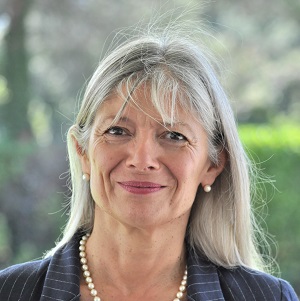 Barbara Casadei, MD, DPhil, president of the European Society of Cardiology (ESC), and British Heart Foundation Professor of Cardiovascular Medicine, University of Oxford, England
Barbara Casadei, MD, DPhil, president of the European Society of Cardiology (ESC), and British Heart Foundation Professor of Cardiovascular Medicine, University of Oxford, England
My main concern right now is, how do we make sure we stop making mistakes and don’t make the same ones again in the future? The failure to assure patients that the hospital can provide clean and safe areas for those who are coming not because of COVID-19 has created substantial collateral damage that was totally preventable. We couldn't even provide the assurance to promote that while the mortality for COVID-19 is about 3%, it’s about 30% for an untreated STEMI, and although COVID-19’s risk increases with age and comorbidities, so does the mortality for acute MI. I have a little slogan that is: we must continue to save the life we know how to save, and that is not only for cardiology. It's across the board, and I think we have that duty not to forget.
The other lesson we’ve learned from this time is efficiency. Some aspects of outpatient clinics can be done remotely very effectively and very well. I think it will be difficult to go back 100% to what we did before just because we've always done it that way. Patients who do not really need a follow-up or to come to the hospital have been in the past reassured by seeing their doctors face-to-face, but there is also the hassle of traveling to a hospital, not to mention the risk of sitting in a full waiting room with other patients.
This time has certainly helped in prioritizing what is it that really, really matters, and then what is the next thing after that and the next thing after that until perhaps it's not really the job of a cardiologist. I think a lot can be delegated—even secondary prevention—to nurse practitioners. I wouldn't say that one should completely forgo any patient contact. First appointments should be in person, but then after that, you can do a lot online. You can organize it like that more efficiently because you can plan it better.
This is a major reset and major disruption and we are learning to actually unpick things and say, ‘Now, for me, what do I want to do for the next 5 years? Where do I want to focus?’ Barbara Casadei
Also, I look at all the junior physicians and the fact that we are now seeing so many people dying in the hospital. That is something that has had an impact, particularly in the centers that have been hit the most. We have put a lot of young people on the front line because they are at lower risk of infection, but to actually get this as one of your early experiences practicing medicine must be very hard. I’m sure this will change their perspective.
Ultimately, this has been a time of disruption. This is a major reset and major disruption and we are learning to actually unpick things and say, “Now, for me, what do I want to do for the next 5 years? Where do I want to focus?” This crisis has certainly helped me focus that way: what is it that matters and what is it that matters less.
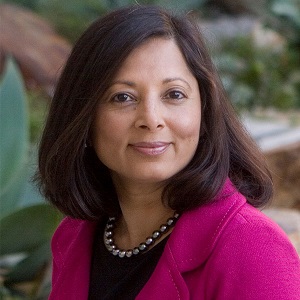 Dipti Itchhaporia, MD, vice president of the American College of Cardiology (ACC) and program director of disease management, Jeffrey M. Carlton Heart and Vascular Institute, Newport Beach, CA
Dipti Itchhaporia, MD, vice president of the American College of Cardiology (ACC) and program director of disease management, Jeffrey M. Carlton Heart and Vascular Institute, Newport Beach, CA
First, I think there is going to be care migration to patient homes. The telehealth movement has been something that we wanted, but it kind of happened overnight with the pandemic. Unlike other specialties, cardiology will still require a certain percentage of patients to be seen in the office, but even if we go from seeing 100% in the office to 50%, we will have made huge progress. For us to have high success in cardiology, we'll have to couple televisits with mobile sensors.
Number two, given the fact that we've seen all the elective procedures shut down in the pandemic, we've recognized that they weren’t necessarily the best strategy after all. I think in the future we will think more about our procedural strategies and will see some migration to ambulatory surgical centers. That's a movement that has already been occurring in some parts of the United States, but I think we may have to relook at this strategy because it would be much easier to have that disengagement from the hospital. What has emerged is that people were afraid to come to the acute hospital in places where they felt that there was a hotbed of COVID-19. Imagine a center that is off-site—people may be more likely to come to your office, an urgent care, or even an ambulatory surgery center. This brings up the whole notion that hospitals are going to be seen as acute care centers in the future. They’ll be great for the emergency room, ICU, some operating rooms, and acute care stuff rather than the day-to-day which can be done separately.
ACC for the first time had a virtual meeting, and other societies are following suit. I don't know if this is going to last, but I believe that we will see a hybrid model of some virtual meetings with some interaction. Fundamentally we don't just go to the meetings just for the science. We go for networking, camaraderie, fellowship, and hallway discussions. While a virtual conference offers its own set of benefits—you can be in your home, view the content at any time, not have to travel, and spend less money—you're sort of left with this sense of feeling gypped a little bit on the interaction piece. Still, I could even see the cath lab utilizing virtual tools when learning new procedures, for example. How about teleproctoring or telemonitoring? I could imagine having a virtual feed in the cath lab going where you could have somebody watching what you're doing and give you some visual technique feedback.
These are financially hard times, so we're going to have to look at all of our processes and see if we are as lean as we can be. Some of the clicks and clacks that we had to do just to kind of get payment are crazy and ridiculous, and in a pandemic, you realize there's no time for fluffy activities that are not meaningful or cost-effective.
Some of the clicks and clacks that we had to do just to kind of get payment are crazy and ridiculous, and in a pandemic, you realize there's no time for fluffy activities that are not meaningful or cost-effective. Dipti Itchhaporia
For example, in cath labs maybe we'll move away from hybrid labs for structural work. The devices are now smaller and more flexible and the chances of complications are smaller, so what's the most efficient use of resources? Usually a hybrid lab has more of a surgical/OR mentality, using more equipment and personnel. Cath labs are much more agile and efficient, using less equipment. In a time when you are worried about PPE and keeping not only the patients but the personnel safe, you won't want as many people in the room. This idea of really looking at all our patient populations and categorizing them as low-, moderate-, and high-risk and then deciding how to handle each I think is a fantastic idea. Not every TAVR patient is the same. Maybe the low-risk TAVRs and MitraClips can still go home the same day, just like we're trying to aim for the PCIs that are lower risk, and so I think this is going to continue to evolve because we're thinking more efficiently about all these things.
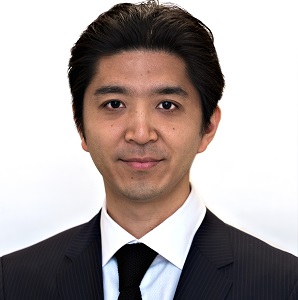
Tsuyoshi Kaneko, MD, cardiac surgeon, Brigham and Women’s Hospital, Boston, MA
I think there is more to be learned from doing surgery on patients who recover from COVID-19. They have more pleuritis and more pericardial effusions, so surgery does become a little bit more difficult. There are also questions about these patients tolerating cardiopulmonary bypass, and I think that's a field where we are going to learn more moving forward. During this crisis, some surgeons have chosen to treat certain aortic stenosis patients with TAVR in whom they otherwise would have performed surgical aortic valve replacement just so that the resources were much less utilized. Surgery requires time in the ICU and a longer postoperative hospital length of stay, whereas with TAVR maybe they could go home the next day. I foresee things like that being heavily discussed within our field.
Quite honestly, in about a year from now, I think the ramp up will not be as high as people think it will be. We have a lot of cases that are waiting for our ORs to restart and we have a stockpile of patients who are waiting for procedures, but one thing that we have realized is that the inflow of patients has significantly diminished because the PCP and cardiology offices are closed. For the influx of patients to come to us, those offices will need to restart.
Financial constraints may play a role in how patients are referred for surgery in the future. For example, some of the private practices may get absorbed by larger organizations, and that will lead to some sort of a restructuring of the healthcare system, which will in turn have a bigger impact on the referral patterns. That really remains to be seen. We don't know the financial impact on some of the private practice physicians that have been closed during this time period, but we see a lot of private practice cardiology offices being completely closed.
We don't know the financial impact on some of the private practice physicians that have been closed during this time period, but we see a lot of private practice cardiology offices being completely closed. Tsuyoshi Kaneko
More generally, postacute care management might change a little bit. Nursing homes were hard-hit by the pandemic, and I’ve noticed an increase in patients expressing to me the feeling that they do not want to go to a nursing home at this period in time because of the fear of contracting COVID-19. I think it will have a mental effect on patients and patients' families. It's quite a traumatic thing that people see on TV, so I think that notion will remain.
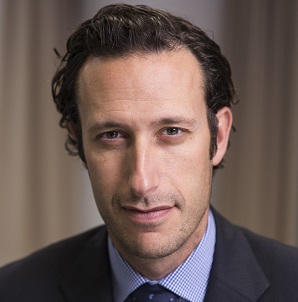 Jonathon Leipsic, MD, chair of the department of radiology, Providence Health Care, St. Paul's Hospital, Vancouver, Canada
Jonathon Leipsic, MD, chair of the department of radiology, Providence Health Care, St. Paul's Hospital, Vancouver, Canada
Obviously, predicting the future can be challenging, but I do think that the historical biases we had—where we did things just because we did them that way—will all go away. We’re really going to be aligning our testing and our clinical decision-making as to what is not only best for patients but finding the most direct answer and the safest way of approaching patient management and work-up with regard to distancing and potential risk exposure for both our patients and ourselves. The ESC guidance document for the management of cardiovascular disease during the pandemic clearly stated that cardiac CT should be the first line and the primary test for patients with stable symptoms of chest pain. It’s very direct, answers the questions, and doesn’t involve a long time in the hospital. Similarly, we’re going to see the role of cardiac CT growing even in stable patients with non-STEMI to really determine who needs to go to the cath lab. This is especially important because we know that taking a patient to the cath lab with PPE requirements and so on is very different now than it was 4 months ago.
I’ve heard others question whether we need to do a cath before a TAVR, especially in low- and intermediate-risk patients. Can we explore using a CT routinely? That's an example where right now many people are open to that. The current registry requires that you document the cath for CMS reimbursement, but those are the sort of things that are going to shift because people are going to say that the requirements are aligned with patient safety and cost-effectiveness and, overall, really rationalizing the use of procedures and tests. When it comes to stable chest pain, we clearly need new guidance in the US and those guidelines are coming, but we’ll need to see reimbursement shift a bit to enable these things. Obviously, there are embedded camps or traditional approaches to things, but I think this pandemic will serve as a crucible for change in a way that other things haven’t. Many of the discussions and debates that we could have had perhaps before will fade, because it becomes less reasonable to do things just because of historical referral patterns.
Obviously, there are embedded camps or traditional approaches to things, but I think this pandemic will serve as a crucible for change in a way that other things haven’t. Jonathon Leipsic
If I were an interventionalist taking a patient to the cath lab, I would want to know, especially as we go into this coexistence phase, that there is a high likelihood that I'm going to do something, and I think CT can be really helpful for that. Many interventionalists were really open to this before, but I think they’re going to really push for it going forward. Overall, that will be a bit of a silver lining. I think it will drive some improvements in patient selection.
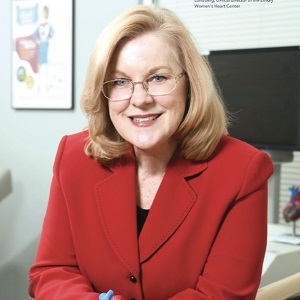 Gina Lundberg, MD, clinical director of the Emory Women’s Heart Center and preventive cardiologist, Emory University School of Medicine, Atlanta, GA
Gina Lundberg, MD, clinical director of the Emory Women’s Heart Center and preventive cardiologist, Emory University School of Medicine, Atlanta, GA
It feels like the world kind of fell apart at the end of February or early March, and it’s been interesting to look at the positive things that have come out of this alongside of course so many tragic and terrible things. As a medical community, we’ve learned that a lot of the meetings that we have are not necessary and it's certainly not necessary to be there in person. For instance, with the virtual ACC meeting, the information was still shared live. Social media has really had a bigger impact during this pandemic than we ever could have imagined and has become the new focus for immediate real-time data and getting the quickest response. Additionally, telemedicine has enabled older patients who never imagined they would be able to work their laptop camera to check in with their doctors. My patients always end up saying something how great their appointment went, and at least half of them ask if we can keep doing this because they don't want to drive to the office.
Perhaps we will eliminate the waiting room and have patients stay in their cars until a sanitized exam room is open and ready. Patients will go in with their own masks, wash their hands, and have minimal physical contact with the doctor, and then maybe follow-up appointments and testing are all done over the phone. The problem isn't the patient that you know that has COVID; it's the patient who's still asymptomatic who doesn't know they have COVID who's interacting with the public and the healthcare workers. So we're trying to plan for those kinds of things.
When we look back on this, I think we're going to see a tremendous benefit. Just to improve handwashing across the country that quickly from a public health standpoint, is going to lead to a lot fewer other infections long-term, including the more common seasonal flu and other upper respiratory tract infections. Another thing that's been interesting is that some people are finding a slower-paced life is a little healthier—they have more time to exercise, more time to cook and eat healthy—but obviously there are huge economic impacts for those who have lost jobs or who have been downsized, and that type of emotional stress in increasing their risk of heart disease.
At this point, when I say to someone, ‘You've got your health,’ I feel like that is a huge blessing. Gina Lundberg
I started my practice during the height of the AIDS epidemic, and thinking back, in some ways this pandemic is similar and, in some ways, different. AIDS didn't impact everybody across the board, but there was a population that was tragically dying before our eyes and we felt very helpless. Those feelings of helplessness associated with watching people die and not knowing how to fix it has been very similar. Other than that time point in recent history, when people say, “Oh, you've got your health,” that's always been underappreciated and very taken for granted. At this point, when I say to someone, “You've got your health,” I feel like that is a huge blessing. The importance of your health is going to stick with me better in the future. As will the personal things that make the joy of my practice so important to me, like being able to hold a patient's hand when they are going through something difficult or hug them for encouragement or for support. Those two things have made me a more mature, wise physician.
It's been surprising to see that not everything has to be done immediately, and we know that's true when we in the United States compare ourselves to, say, the UK or Canada. Maybe the American doctors are learning that waiting actually works out okay in a lot of instances. Ultimately, I think we are going to be a little different, maybe less hurried, less hassled, a little slower paced, and a little more appreciative of just the daily routine that we used to take for granted.
 Ehtisham Mahmud, MD, immediate past-president of the Society for Cardiovascular Angiography and Interventions (SCAI) and director of interventional cardiology and cardiac cath lab, University of California, San Diego
Ehtisham Mahmud, MD, immediate past-president of the Society for Cardiovascular Angiography and Interventions (SCAI) and director of interventional cardiology and cardiac cath lab, University of California, San Diego
A year from now, we're probably still going to be in some stage of this COVID-19 pandemic. If I were to look broadly, I would say we need to ensure that all the services we provide are done in the safest possible manner. Patients understand the risk of cardiovascular disease, and we need to tell them that delaying procedures or tests or not getting treatment has its inherent risks, but that may be offset by their concern or fear of COVID-19 acquisition. A number of things are already starting.
At UC San Diego, we are currently testing all our patients before any outpatient elective procedure. Inpatients are all tested in the emergency room at the time of admission. This is one thing that will be important going forward to alleviate the anxiety of the healthcare staff working in the cath labs and in-patient units and EP labs, and it will ensure and provide a greater perception of safety for patients as well that they're coming to a safe environment.
Secondly, there will be universal use of PPE. Previously, aside from a gown, workers in more than half the cath labs in the country were not wearing any other protection like caps or masks. The idea was that we're in a pretty sterile environment without a lot of aerosolization of respiratory droplets, and there also wasn't an issue of other sterility for the workers required similar to the OR. I think that's gone. Now, at the very least, all healthcare workers will be masked, gloved, gowned, and wearing a cap likely with face shield protection. That's a practical PPE aspect that I think will universally permeate in the healthcare delivery for cardiovascular procedures.
Now, at the very least, all healthcare workers will be masked, gloved, gowned, and wearing a cap likely with face shield protection. Ehtisham Mahmud
As far as diagnostic testing goes, whether or not we shift from traditional exercise stress testing to more image-based testing, perfusion and/or CT diagnostic testing, remains to be seen. Also, I think we're going to do a lot more early and same-day discharge for as many procedures as possible. Virtual visits, certainly for follow-ups, will become part of our new clinical care. That's a silver lining out of this pandemic—a lot of institutions wanted to have telemedicine or telecardiology and there wasn't an easy way to do it. New consultations and diagnostic testing will still require patients to come in, but there's a lot more we'll be able to do virtually and I think that's here to stay.
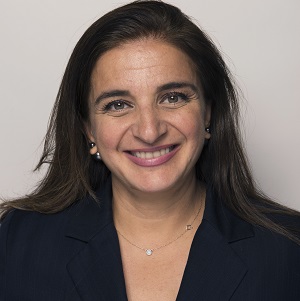 Roxana Mehran, MD, professor of medicine and director of interventional cardiovascular research and clinical trials, Zena and Michael A. Wiener Cardiovascular Institute at Mount Sinai School of Medicine, New York
Roxana Mehran, MD, professor of medicine and director of interventional cardiovascular research and clinical trials, Zena and Michael A. Wiener Cardiovascular Institute at Mount Sinai School of Medicine, New York
I've been thinking about all the patients with cardiovascular disease and how important it is for us to make sure that we communicate and continue to educate our patients and colleagues about the fact that as bad as COVID-19 is, cardiovascular disease remains the number one cause of death in men and women around the world still. As such, I think cardiovascular care is going to be very, very similar to us going back to the new normal, or the new abnormal, but we need to plan ahead of time to think about what that looks like.
We are already working on several mechanisms by which we can reopen some of the procedures that were put on hold for patients so that we could get through the pandemic and the surge of cases in our own hospitals. Importantly, we have to make sure that the healthcare workers are protected. As we open up, doctor visits will become a hybrid visit—very, very different than what we were used to, but rather a combination of telehealth for triage purposes, where you could see patients and assess whether they need to come in. We can ask them beforehand to make sure they get a lot of their monitoring devices at home like a blood pressure kit and maybe a pulse oximeter. For those who do come in, all of that scheduling will be changed so multitudes of patients aren’t sitting in the waiting room. Before, where we would just jump into hospitalizing patients, this gives us an opportunity to work with them to optimize their medical management at home and then use all of these other services to keep them as far away from highly condensed areas of where there could be virus exposure.
I think about 9/11, and how before that we took for granted that we would just go to the airport and walk on the plane or go to an office building and just go straight up on the elevator. Roxana Mehran
I think about 9/11, and how before that we took for granted that we would just go to the airport and walk on the plane or go to an office building and just go straight up on the elevator. I think this is going to be sort of the same, and I don't think it's a year or 2 years. It's going to be the new normal until we find a complete vaccine and a cure for this. It may take a couple of years before we go back to where we were. And because we're so innovative, I think we're going to find some new ways that the new normal may be better than the old ways.
Research also will have a whole new twist to it. This particular environment has made us so open about data sharing and using electronic health records to get large numbers of data sets out for analysis, evaluation, and interpretation so that we could get our arms around the virus and hopefully good treatments or understand what's bad, what's good, what works, what doesn't. I have seen good collaboration and publications, and the research I think is positive in that regard. What's not positive is running quickly to conclusions on certain things, throwing the kitchen sink at everybody, and using bad science.
I have a new way of thinking about clinical trials and even management of my patients. For example, the ISCHEMIA trial came at a good time, showing that invasive management really didn't improve mortality for stable ischemic heart disease and we could sit on patients and allow the medications to work really well without rushing anyone to the cath lab. Well, that's kind of what we're doing to everybody right now because we just don't want to expose them. The other part that is most important is the incorporation of mental health and understanding the impact of post-traumatic stress disorder. Many of us are feeling isolated, stressed, sleeping poorly, eating badly, and so all of this could have a very big negative impact. We also don't know whether or not the SARS-CoV-2 virus could have a downstream effect years later on cardiovascular health. All of those questions need to be answered.
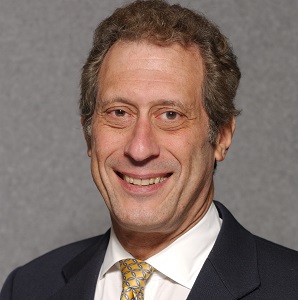 Jeffrey Moses, MD, director of interventional cardiovascular therapeutics, NewYork-Presbyterian/Columbia University Irving Medical Center, New York
Jeffrey Moses, MD, director of interventional cardiovascular therapeutics, NewYork-Presbyterian/Columbia University Irving Medical Center, New York
I do have confidence that we will conquer this and not just have to live with it. We’ll see therapeutics and cocktails that will ameliorate the incredible mortality rate from those who actually get very sick from COVID-19. And there have been some changes to practice that have made us more efficient that we’re not going to let go of.
When you start looking at all the excess deaths that we’re seeing not accounted for by the virus, there’s a major cost to that. The delay in care, especially in cardiovascular disease, is having devastating consequences. So, the main thing we have to do in the interim is structure our care to overcome patient fear. Secondarily, we really have to separate out the COVID from the non-COVID so that patients stop perceiving that hospitals are dangerous. That’s a common mindset and that’s costing lives. With more robust and facile testing, which I think will be something simpler and quicker than a nasal swab, patients and healthcare workers will have passports which can start building confidence in the patients coming back. Physically, we’ll adapt the same way restaurants and theaters will. However, telemedicine is here to stay.
To some extent we’ve gotten used to death, but I hope that doesn’t make us more passive. Jeffrey Moses
To some extent we’ve gotten used to death, but I hope that doesn’t make us more passive. We’re sitting in a situation where we have not had a lot of control, and there’s been a lot of supportive and passive care. We’re a specialty that doesn’t believe in inactivity—there are few cases in cardiovascular disease these days where you encounter a problem and the initial response is to give up. Unfortunately, we’ve gotten a little inured to having patients out of our control. I guess it can be demoralizing, and it’s certainly out of our character. So, I hope that doesn’t spill over to our general practice.
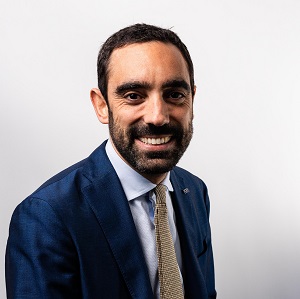 Giulio Stefanini, MD, PhD, associate professor of cardiology, Humanitas Clinical and Research Hospital IRCCS, Rozzano-Milan, Italy
Giulio Stefanini, MD, PhD, associate professor of cardiology, Humanitas Clinical and Research Hospital IRCCS, Rozzano-Milan, Italy
Across the globe, we have had major changes in the organization of our practice in the last 3 months, and we are now facing the reopening. First, we face the problem of what is going to happen in terms of cardiovascular complications to survivors of COVID-19. Once we start having consistent data showing the associated myocardial injury, we will need to start organizing an adequate cardiovascular follow-up of survivors to evaluate whether they develop long-term cardiovascular consequences. In a year from now, I will expect to have dedicated outpatient clinics for COVID-19 patients.
Second, we will have to continue treating non-COVID-19 patients. During the last 3 months, there has been a significant shift in healthcare resources at the expense of patients with chronic cardiovascular conditions. We had a dramatic decrease in numbers of outpatient visits and the long-term effects of this will be potentially dramatic in terms of cardiovascular complications, need for hospitalization, and potentially mortality. We need to delineate the strategies to tackle this problem. And we continue to face the problem of patients who are still resistant to show up at the hospital because they see hospitals as potential places of infection. We need to overcome the psychological barrier that the patient may have towards physically coming to the hospital. In that sense, I would like to see a larger use of telemedicine tools to evaluate patient clinical status and eventually select through this contact those patients who would benefit from a physical visit.
Once we start having consistent data showing the associated myocardial injury, we will need to start organizing an adequate cardiovascular follow-up of survivors to evaluate whether they develop long-term cardiovascular consequences. Giulio Stefanini
It’s difficult to predict which of these changes will be permanent. Once you reorganize service and it works, especially in terms of optimizing the management of resources compared with the pre-COVID era, it could be that such changes stay just because they work more smoothly. We already had tools to implement, for example, telemedicine, but we were blocked by the general perception that there could have been some resistance from patients to switch. And it might be that COVID just springs us 5 years ahead.
Physician responses have been edited for clarity and brevity.
Yael L. Maxwell is Senior Medical Journalist for TCTMD and Section Editor of TCTMD's Fellows Forum. She served as the inaugural…
Read Full Bio

Comments